Dianchi Lake, located in the southwestern suburbs of Kunming, Yunnan Province, is the sixth-largest freshwater lake in China and the largest freshwater lake in Yunnan Province, known as the "Pearl of the Plateau". It is a national 4A-level tourist attraction and a plateau limestone fault-depression lake formed under the influence of the Tertiary Himalayan tectonic movements. Belonging to the Jinsha River system in the Yangtze River Basin, Dianchi Lake consists of two parts: Caohai (Grass Sea) and Waihai (Outer Sea). It is distributed in a north-south direction as a whole, with a bow-shaped lake body. The lake surface is at an altitude of 1,886 meters, with a maximum north-south length of 36.5 kilometers, a maximum east-west width of 12.8 kilometers, and a lakeshore line of 199.5 kilometers. It has an average depth of 5 meters, a maximum depth of 8 meters, a water storage capacity of approximately 1.3 billion cubic meters, a total area of 309.5 square kilometers, and a total drainage basin area of 2,920 square kilometers. As one of China's three key protected lakes, Dianchi Lake features diverse types of basin ecosystems and rich species diversity, representing the basic characteristics of the biodiversity composition in the central Yunnan Plateau.
History and Culture
In ancient times, Dianchi Lake was called Dianchi Ze, Diannan Ze, and also known as Kunming Lake, Kunming Chi, and Dianhai. Regarding the origin of its name, one theory holds that the Panlong River, which flows into the lake from the upper reaches, has a wide and deep watercourse, while the outlet of the Tanglang River in the lower reaches is narrow and shallow, making the water flow seem to reverse direction. Hence, it was named "Dianchi" (with "Dian" implying "reversal"). Another theory suggests that "Dian" is a variant pronunciation of "die (dian)" in the Yi language, meaning "a large basin". Since the area along the Dianchi Lake is one of the largest basins in Yunnan, it got this name.
The Dianchi Lake area has a long history. During the Neolithic Age, residents in this area lived around the lake and relied on fishing for food, leaving behind the "shell mound sites" which contain the most abundant research materials. More than 2,000 years ago, a brilliant bronze culture thrived with Dianchi Lake as its center. In academic circles, the bronze culture that emerged in the Dianchi Lake area from the Warring States Period to the Eastern Han Dynasty is customarily referred to as the "Dian Culture". Dianchi Lake also has a long history of navigation. Wang Sheng, a poet of the Yuan Dynasty, depicted the prosperous scene of the Yunjin Wharf in the southeast of Kunming City at that time in his "Ode to Dianchi Lake".
Major Attractions
Haigeng Dam
Starting from the estuary of the Panlong River into the lake in the east and facing Xishan Mountain (Western Hills) in the west, Haigeng Dam stretches 3.5 kilometers across Dianchi Lake. Today, it has become a world-famous scenic spot. Every winter, a large number of seagulls migrate here from Siberia, attracting tourists from all over the country.
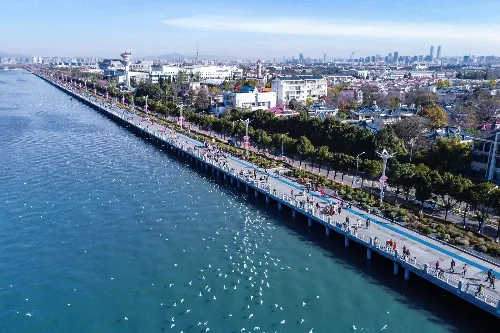

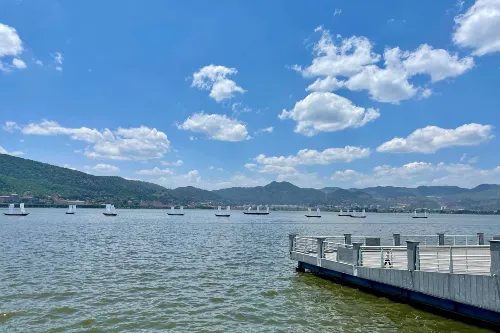
Daguan Pavilion
Built in the 29th year of the Kangxi Reign (1690 AD) under the supervision of Wang Jiwen, the Governor of Yunnan, Daguan Pavilion faces Dianchi Lake and overlooks the rolling green Taihua Mountain across the water, hence also known as "Jinhua Pu" (Near China Bank). It got its name "Daguan Pavilion" (Grand View Pavilion) because of the broad view and spectacular scenery seen from the pavilion. As a well-known tourist attraction, its 180-character long couplet is renowned as the "Longest Couplet at Home and Abroad".
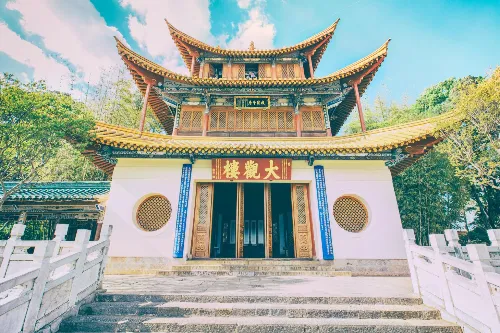
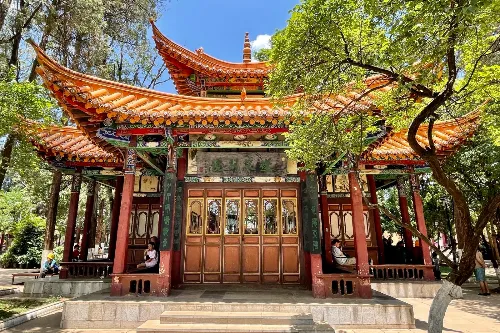
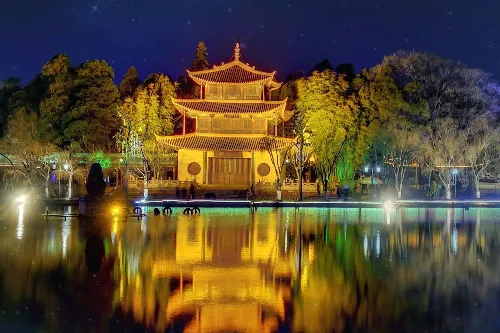
Yunnan Ethnic Village
Located on the bank of Dianchi Lake, Yunnan Ethnic Village showcases the architectural styles, folk customs, and traditional cultures of various ethnic groups in Yunnan. It serves as an important window for understanding the cultures of Yunnan's ethnic minorities.
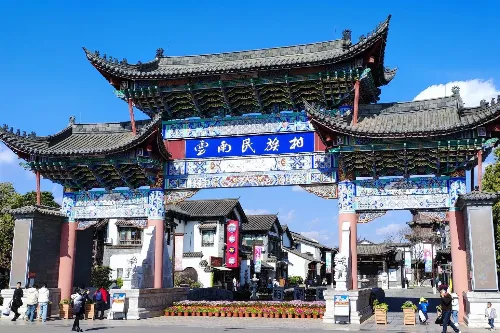
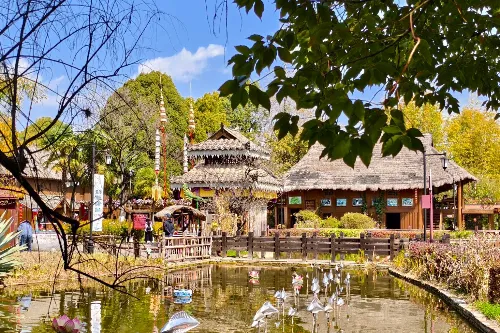
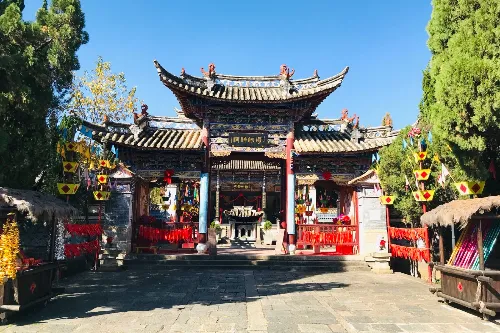
Xishan Forest Park
Xishan Mountain (Western Hills) lies beside Dianchi Lake like a "sleeping beauty". There are scenic spots such as Huating Temple, Taihua Temple, Sanqing Pavilion, Longmen (Dragon Gate), and Qiongzhu Temple on the mountain. Tourists can enjoy beautiful natural scenery and rich cultural landscapes here.
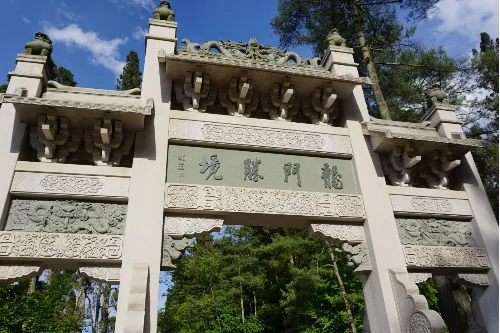
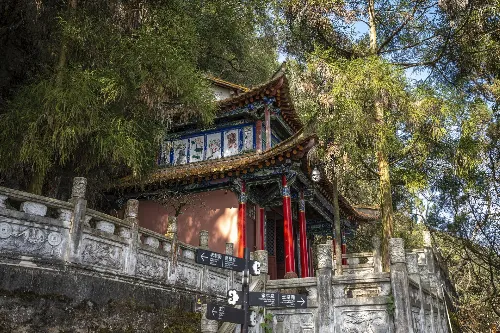
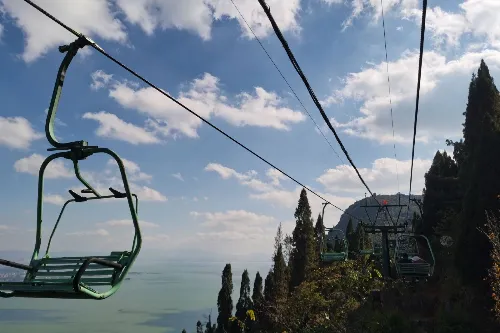
Tour Route
You can first go to Haigeng Dam to watch seagulls (in winter) or enjoy the lake and mountain scenery, then take a cruise to tour Dianchi Lake, and enjoy a distant view of the "Sleeping Beauty" of Xishan Mountain along the way. Next, head to Daguan Pavilion to appreciate the long couplet and ancient architecture. After that, visit Yunnan Ethnic Village to experience the cultures of various ethnic groups. Finally, you can choose whether to go hiking in Xishan Forest Park based on your time and physical strength.
Travel Tips
- If you visit Dianchi Lake to see seagulls in winter, remember to bring more food such as bread to feed the seagulls. However, please pay attention to safety and do not get too close to the seagulls.
- If you plan to go hiking, such as in Xishan Forest Park, it is recommended to wear comfortable sports shoes.
- When taking a cruise, please take good care of your personal belongings to prevent them from falling into the lake.
- When traveling in summer, take measures to protect yourself from the sun and mosquitoes.
Notes
- Do not litter around Dianchi Lake; keep the scenic area clean and tidy.
- Swimming in Dianchi Lake is prohibited to avoid dangers.
- Do not use spoiled food when feeding seagulls to avoid harming them.
- Abide by all the rules of the scenic area and do not arbitrarily damage public facilities or cultural relics and historic sites.
Transportation
- Bus: You can take buses No. 44, No. 73, No. 94, etc., to reach Haigeng Dam and other scenic spots around Dianchi Lake.
- Metro: You can take Metro Line 5 to Baofeng Station, then walk or transfer to a bus to reach some areas of Dianchi Lake.
- Taxi: Taking a taxi is convenient and fast, allowing you to reach your destination directly.
Opening Hours
Open 24 hours a day throughout the year.
Tickets
Dianchi Lake itself is an open scenic area, so no ticket is required. However, fees are charged for the tourist activities and projects within the scenic area.
Online Booking
Click here to jump to the Trip.com ticketing platform for ticket purchase.


